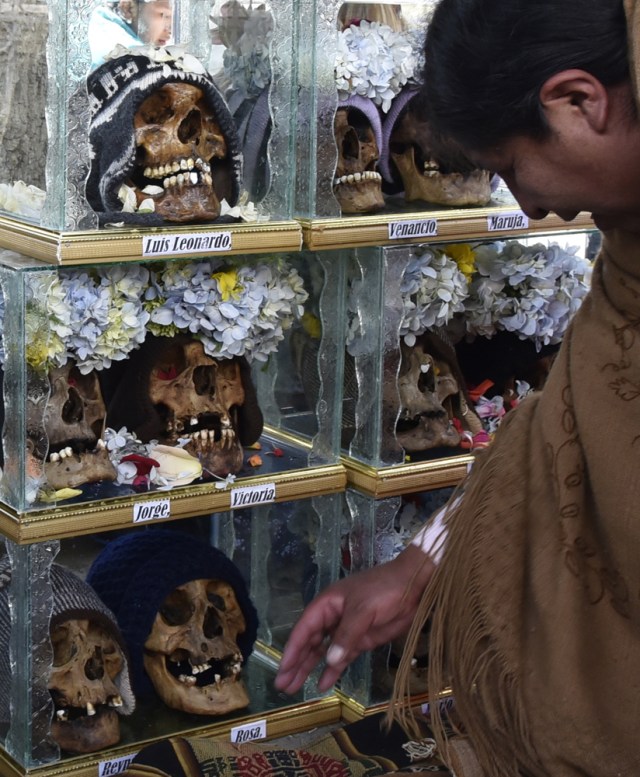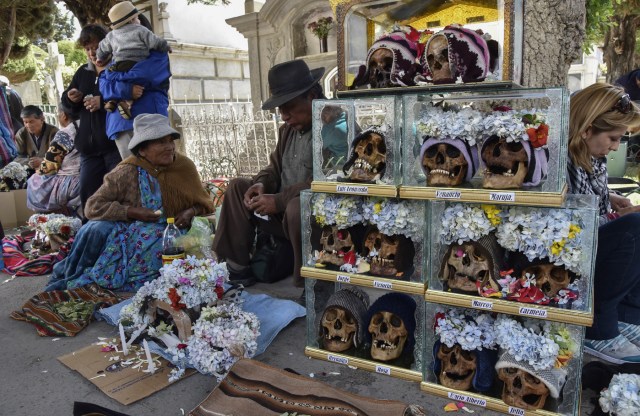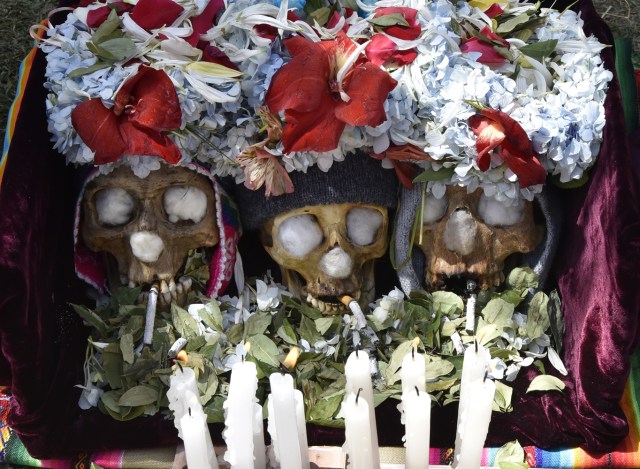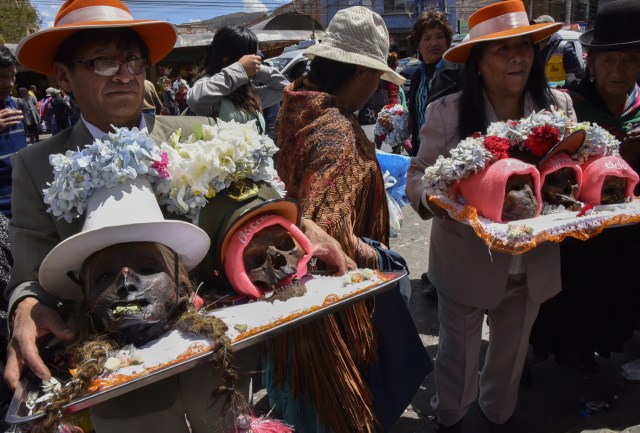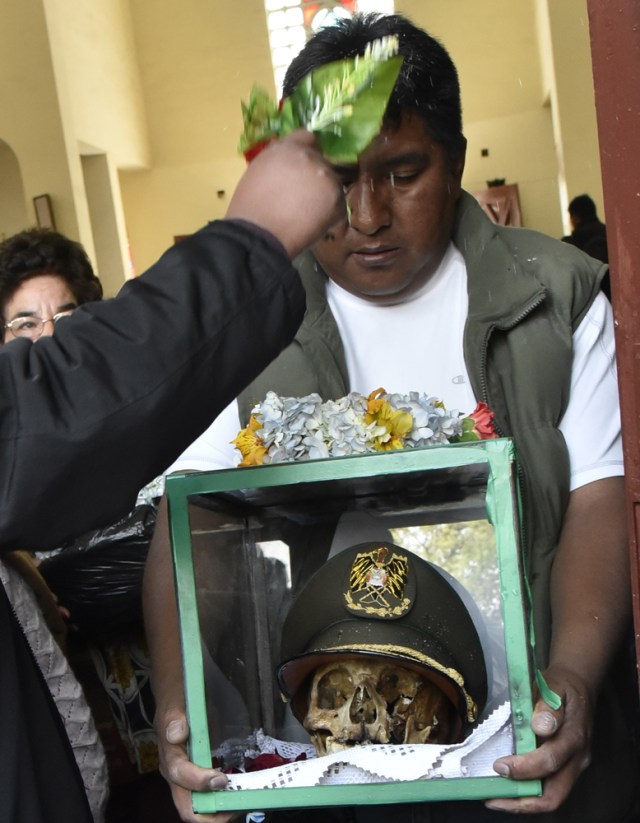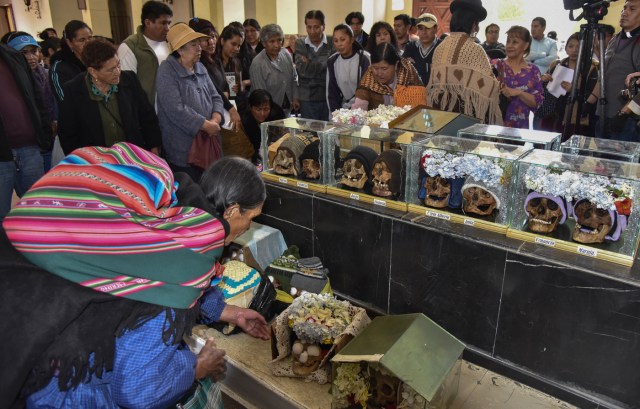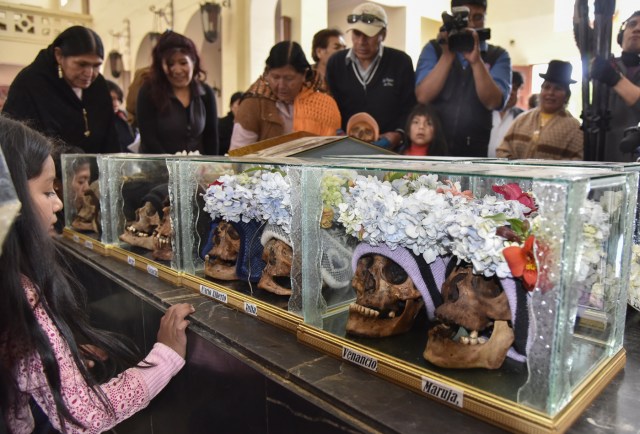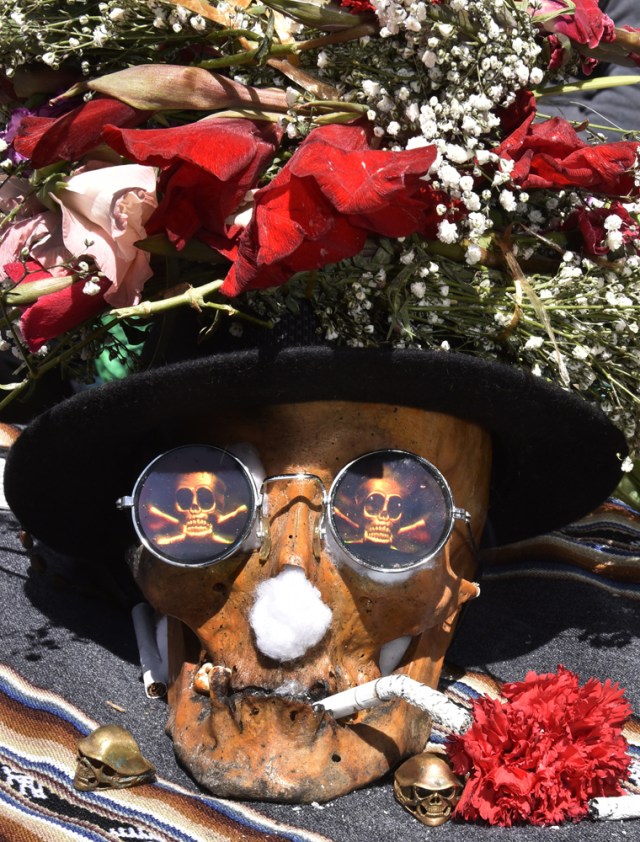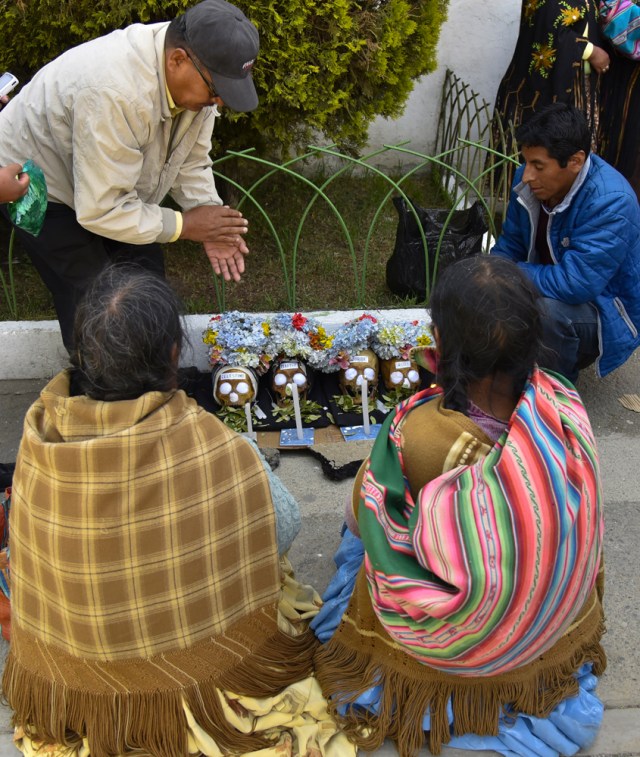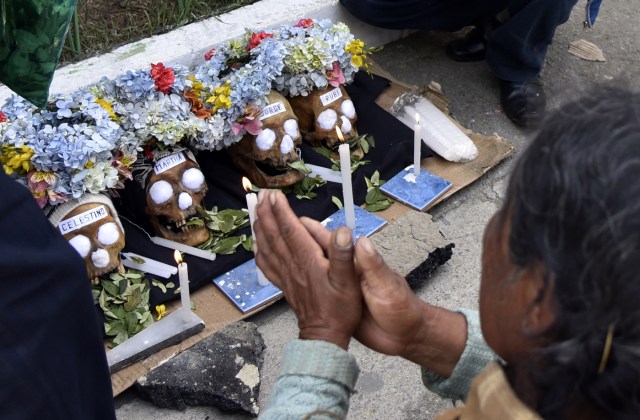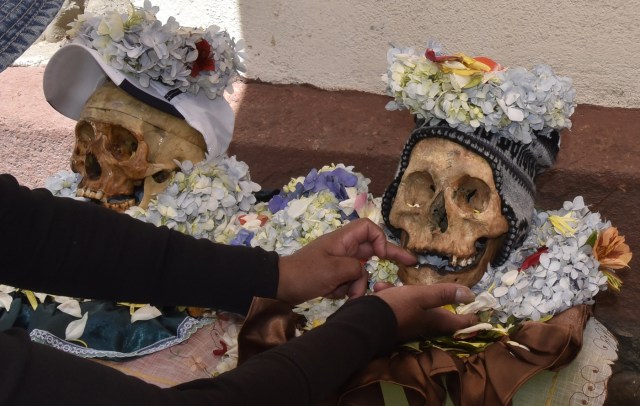
Unas llevan anteojos. Otras sombreros y un cigarro. No falta alguna con un quepis militar. Son las “ñatitas” o cráneos humanos, y tienen poderes milagrosos. Es un culto prehispánico que este miércoles reunió a miles de personas en el cementerio de La Paz, el más antiguo de Bolivia.
“Hemos tenido unos 10.000 personas como visitantes y se expusieron, creo, unas 700 ‘ñatitas’ que han traído personas particulares”, informó a la AFP el administrador del camposanto, Ariel Conitzer. En Bolivia y algunas zonas de Sudamérica, “ñato” alude a la nariz reducida, como la de los cráneos.
Los devotos llegaron temprano al cementerio -que data de 1826, un año después de la fundación de la República- y por pasillos del camposanto les rinden culto. Algunos llegaron con bandas de música o mariachis y otros con comida y bebida.
¿De dónde salen los cráneos? Autoridades del cementerio han explicado en otras ocasiones que las ‘ñatitas’ terminan extrayéndose de personas o sepulcros olvidados en el mismo camposanto, o son restos de familiares que pasan de generación en generación. Los devotos las guardan en sus casas dentro de urnas.
Las calaveras suelen ser adornadas con sombreros, gorros de lana, coronas de flores o lienzos. Algunos llenan las cavidades oculares con algodón. Los devotos encienden velas y realizan rezos, con la creencia de que tienen poderes.
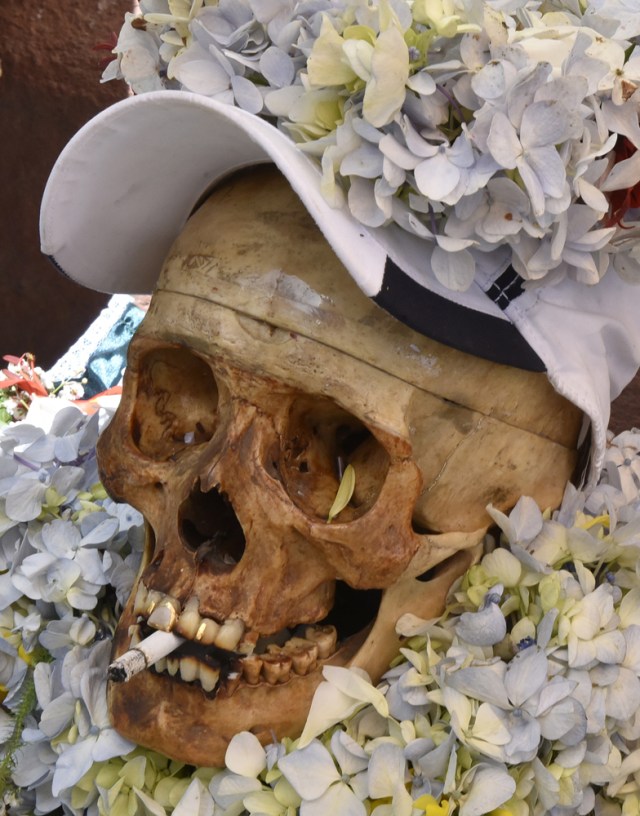
“Aquí están Andrea, Álex, Julia. Va a venir un padre y nos va a bendecir. Cada 8 de noviembre vengo”, cuenta un hombre al canal ATB, mientras muestra una caja con tres cráneos que llevan coloridos gorros para el frío y gafas para el sol.
“Ellos nos cuidan. Tienen un cuartito en la casa”, afirma.
Según la tradición andina, los cráneos dan protección a sus creyentes, hacen que sus negocios prosperen y son guardianes de la salud.
En épocas prehispánicas, los nativos sacaban a pasear en andas (tableros sostenidos por dos varas paralelas) los restos de los difuntos, para que los ‘ajayus’ (espíritus) volvieran a reencontrarse con sus cuerpos y sus familias.
El administrador del cementerio explicó que aunque este año hubo menor afluencia de personas, hubo gran devoción, “pues las personas llegaron con sus grupos musicales, sus ‘tarqueadas’ (un baile andino) e incluso con bandas (folclóricas andinas) famosas”.
La fiesta se realiza ocho días después del inicio de la fiesta católica de “Todos los Santos”, y se replica en varios cementerios del país.
